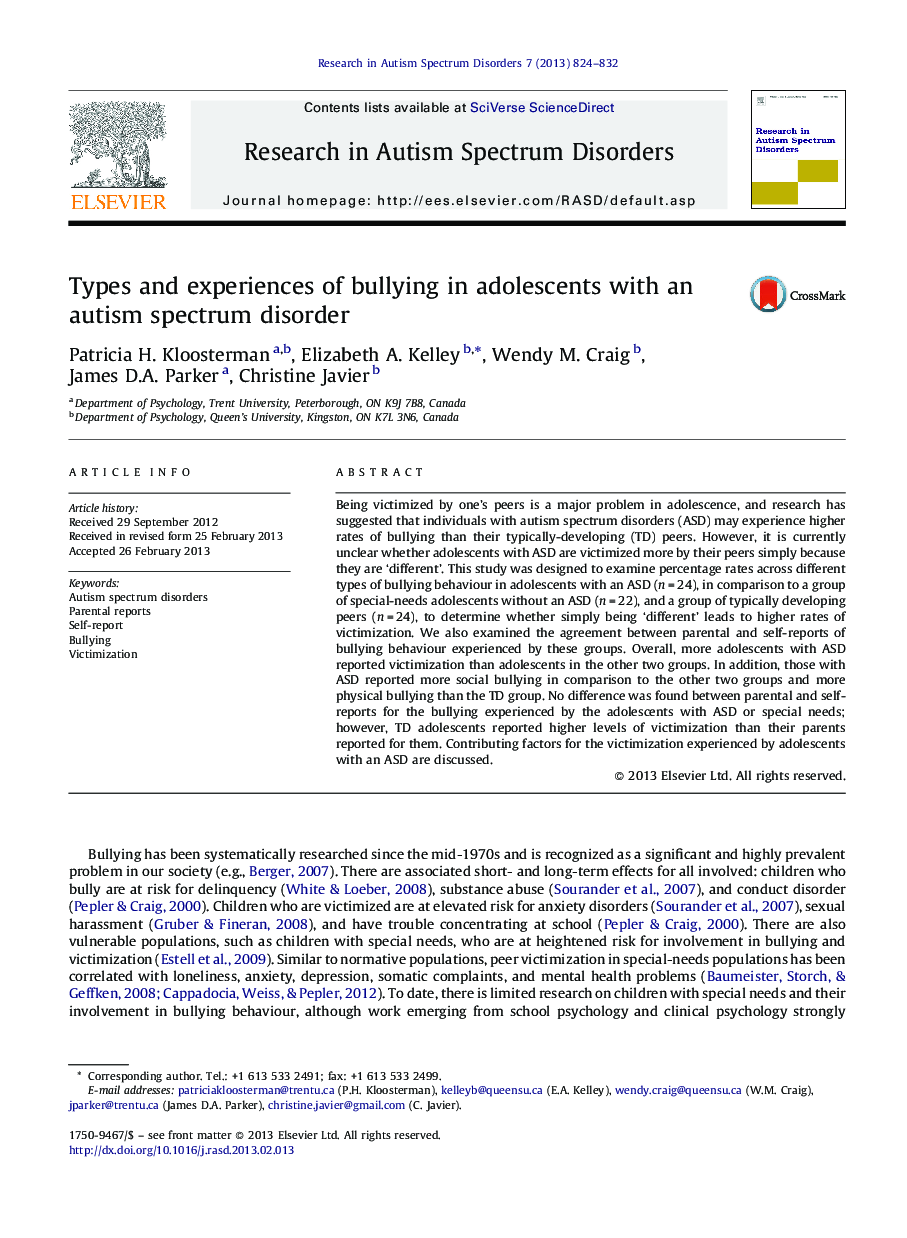| Article ID | Journal | Published Year | Pages | File Type |
|---|---|---|---|---|
| 370388 | Research in Autism Spectrum Disorders | 2013 | 9 Pages |
Being victimized by one's peers is a major problem in adolescence, and research has suggested that individuals with autism spectrum disorders (ASD) may experience higher rates of bullying than their typically-developing (TD) peers. However, it is currently unclear whether adolescents with ASD are victimized more by their peers simply because they are ‘different’. This study was designed to examine percentage rates across different types of bullying behaviour in adolescents with an ASD (n = 24), in comparison to a group of special-needs adolescents without an ASD (n = 22), and a group of typically developing peers (n = 24), to determine whether simply being ‘different’ leads to higher rates of victimization. We also examined the agreement between parental and self-reports of bullying behaviour experienced by these groups. Overall, more adolescents with ASD reported victimization than adolescents in the other two groups. In addition, those with ASD reported more social bullying in comparison to the other two groups and more physical bullying than the TD group. No difference was found between parental and self-reports for the bullying experienced by the adolescents with ASD or special needs; however, TD adolescents reported higher levels of victimization than their parents reported for them. Contributing factors for the victimization experienced by adolescents with an ASD are discussed.
► Research has found higher rates of being bullied by peers in individuals with ASD. ► We also compared our well-characterized sample to a group with special needs. ► Adolescent boys with ASD experienced more social exclusion than the control groups. ► Adolescent boys with ASD also experienced more physical bullying than TD boys. ► High-functioning boys with ASD may be bullied because of their social differences.
